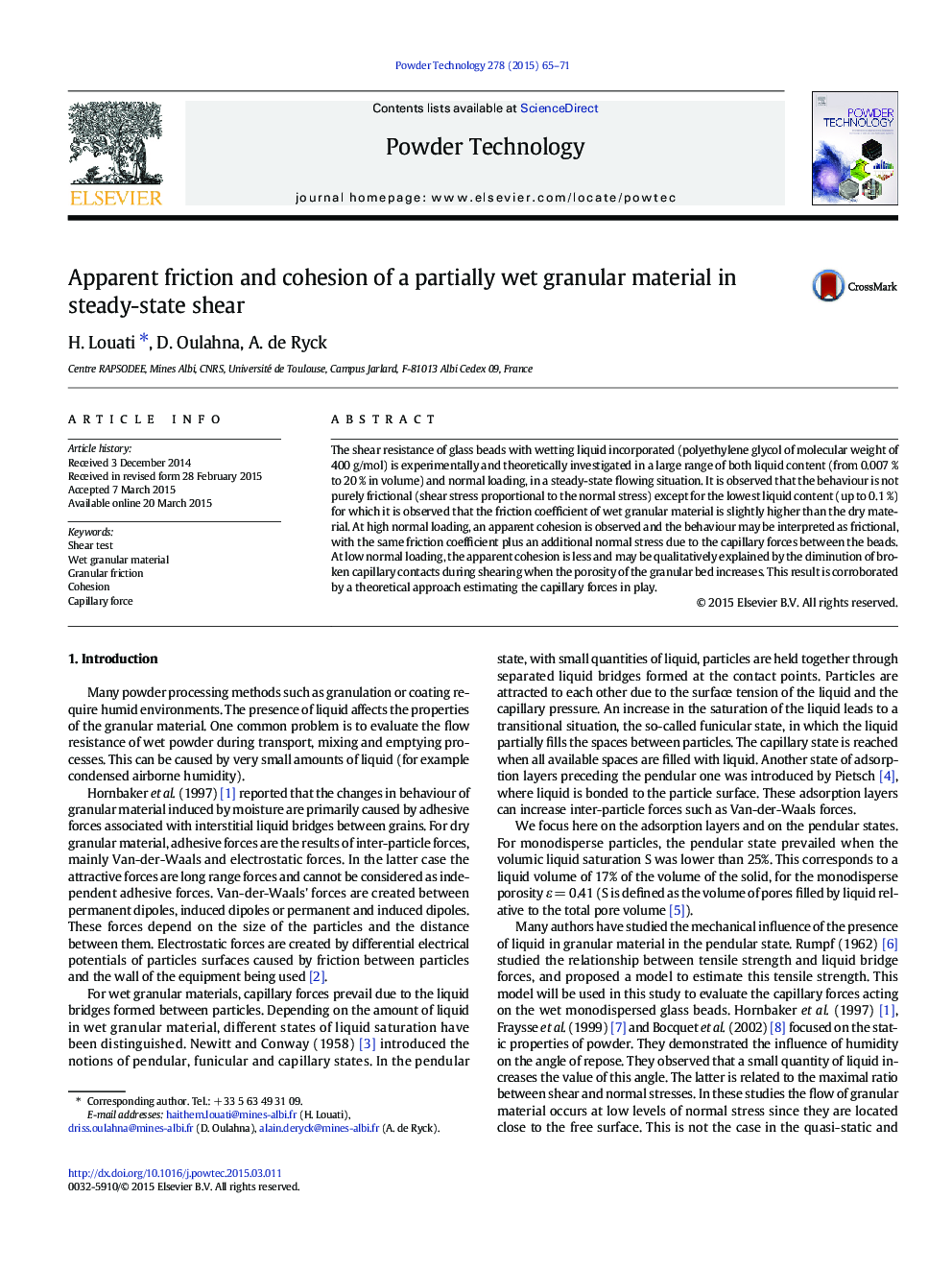| کد مقاله | کد نشریه | سال انتشار | مقاله انگلیسی | نسخه تمام متن |
|---|---|---|---|---|
| 235598 | 465642 | 2015 | 7 صفحه PDF | دانلود رایگان |
• Steady-state shear resistance of wet monodispersed glass beads is studied.
• Large range of both liquid content and normal loading is investigated.
• Dependence of the shear resistance on liquid content and normal loading is observed.
• An apparent cohesion is observed at high normal loading.
• Results are semi-quantitatively explained by a model of capillary force distribution.
The shear resistance of glass beads with wetting liquid incorporated (polyethylene glycol of molecular weight of 400 g/mol) is experimentally and theoretically investigated in a large range of both liquid content (from 0.007 % to 20 % in volume) and normal loading, in a steady-state flowing situation. It is observed that the behaviour is not purely frictional (shear stress proportional to the normal stress) except for the lowest liquid content (up to 0.1 %) for which it is observed that the friction coefficient of wet granular material is slightly higher than the dry material. At high normal loading, an apparent cohesion is observed and the behaviour may be interpreted as frictional, with the same friction coefficient plus an additional normal stress due to the capillary forces between the beads. At low normal loading, the apparent cohesion is less and may be qualitatively explained by the diminution of broken capillary contacts during shearing when the porosity of the granular bed increases. This result is corroborated by a theoretical approach estimating the capillary forces in play.
Figure optionsDownload as PowerPoint slide
Journal: Powder Technology - Volume 278, July 2015, Pages 65–71
